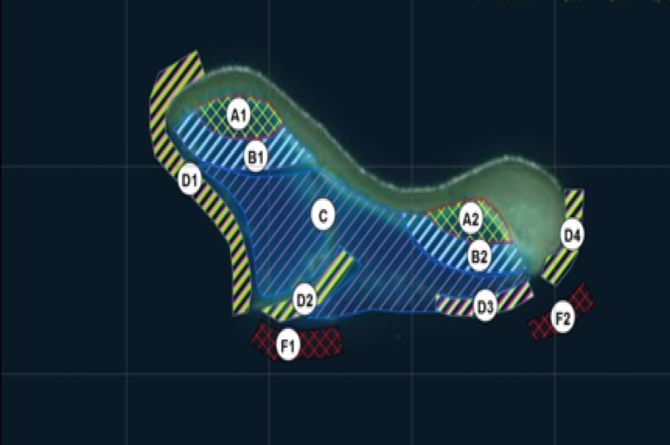A Management Plan for Satayah Reef
Following the conservation success of the management of tourist activities and visits in Shaab Samadai (Dolphin House), HEPCA in cooperation with the EEAA has started work on the implementation of a management plan for Shaab Satayah (Dolphin Reef). The plan has been drawn up by Mr Mohamed Ismail, Assistant Lecturer at the Faculty of Science, Port Said University under the supervision of Professor Mahmoud Hanafi, our scientific consultant.
Over a 1.5 year period a survey was carried out as a basis for the plan, which showed encounters with dolphin groups at Satayah between 91-100%, with an average of 93%. The presence of the groups is usually found on a daily basis during the summer months. Satayah Reef represents a resting zone for groups of dolphins for certain activities during the daytime, while at night they go out to hunt and find food.
The size of the groups was between 23-112 dolphins, with a daily average of 58 dolphins. The main resting points are between two areas: A1 and A2 in which it was found that the dolphins spent 62% and 26% of the time respectively. Dolphin births usually take place during July and August each year.
The main purpose of the plan:
- To conserve the dolphin population living in the area
- To prevent the wrong behaviour of the visitors and reduce the number of visits to the areas where dolphins most use to rest.
- To encourage active community engagement and participation in the management plan from the outset.
Together, the EEAA and HEPCA have set a zoning plan for Satayah, which divides the reef into 4 main areas as follows:
Zone A1 & A2: Absolute Protection Zone.
These are two shallow areas in the north east and south east parts of the main coral reefs of the Satayah area, no more than 4m in depth. Surveys showed that dolphins remain in Zone A1 up to 61% of the time, and A2 up to 26% of the time. They therefore represent the main areas of comfort and relaxation of Spinner Dolphins in the area. The width of the zone is up to 350m (A1) and 150m (A2).
Under the new plan, these two areas will be completely off-limits to all activities except scientific research with prior authorisation by the Wadi El Gimal-Hamata administration. They are absolute protection zones, representing the heart of the managed area.
Zone B1 & B2: Snorkeling Zone (Second-Level Protection)
This consists of two zones adjacent to the Absolute Protection Zone (A1 & A2) where no dive or boat movement activities are permitted. Each one is 200-250m in length. Snorkel activities and scientific research are permitted.
Zone C: Swimming and Snorkeling Zone
In these areas snorkeling, diving and scientific research are permitted away from the interior. The movement of small boats (zodiacs) is permitted at a speed not exceeding 10knots per hour.
Zone D: Diving Zone
These areas are for diving on coral reefs outside the inner area.
Zone F: Tourist Boat Anchorage Zone
Anchoring and docking is only allowed in these specific zones.
The zoning plan is applied due to the unsustainable practices being carried out, and the harassment of the spinner dolphin population in the area, as well as the potential safety issues for swimmers, snorkelers and divers.
This initiative has been discussed by HEPCA and the EEAA in cooperation with the CDWS. They strongly supported the survey conducted by the Financial Sustainability Project with visitors, which included more than 1,000 visitors from different nationalities to determine their desire to pay visit fees and implement a management plan for the total area of Stayah, which showed that 100% of the respondents strongly support the implementation of the plan, more than 80% of them would be happy to pay a fee that ranges between 5 to10 euros per person per day.
Finaly, HEPCA would like to thank everyone who participated in the preperation of the plan headed by Mr. Ahmed Ghalab, Director General of the Red Sea Protected Areas and Engineer Zuhair Khairuddin, head of the CDWS and all the diving centers and boat captains working in the southern region of the Red Sea.



